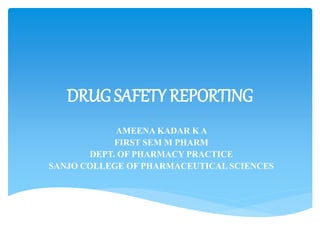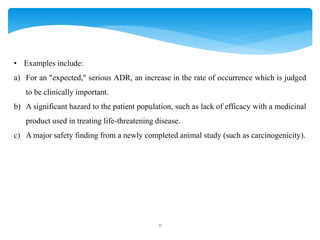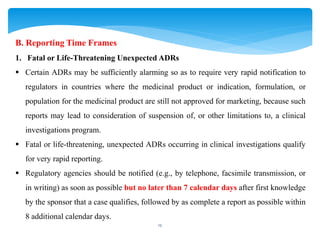The document discusses the importance of harmonizing clinical safety data reporting during different stages of a medicinal product's development and marketing. It outlines key definitions, responsibilities of investigators and sponsors, and the requirements for expedited reporting of serious adverse drug reactions (ADRs). Additionally, it emphasizes the need for standardized reporting mechanisms and the consequences of failing to provide proper compensation for trial-related injuries.




















![21
2. Suspected Medicinal Product(s)
Brand name as reported
International Non-Proprietary Name (INN)
Batch number
]Indication(s) for which suspect medicinal product was prescribed or tested
Dosage form and strength
Daily dose and regimen (specify units - e.g., mg, ml, mg/kg)
Route of administration
Starting date and time of day
Stopping date and time, or duration of treatment.
3. Other Treatment(s)
For concomitant medicinal products (including non-prescription/OTC medicinal products)
and non-medicinal product therapies, provide the same information as for the suspected
product.](https://image.slidesharecdn.com/drugsafetyreporting-230129175602-63a9e1ce/85/DRUG-SAFETY-REPORTING-pptx-21-320.jpg)




